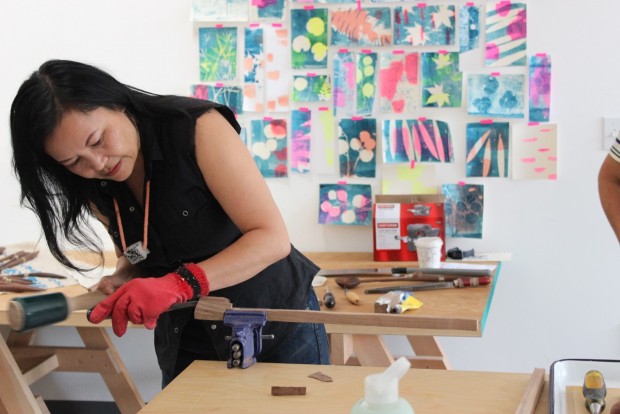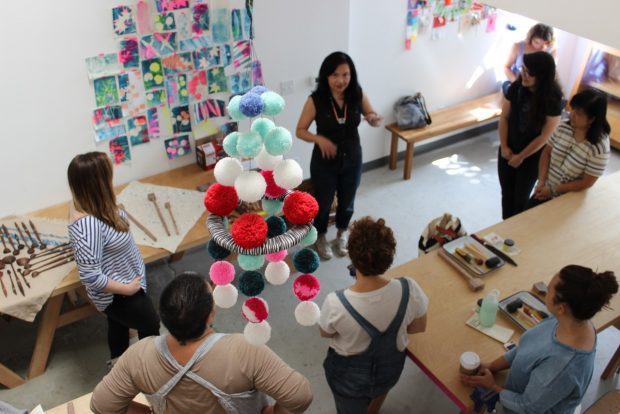Windy Chien has made an indelible mark in the craft market, primarily with her line of Fat Bottomed Girls spoons. These hand-carved, wooden beauties are created using special hand tools that Chien has mastered over the years while working in her backyard studio. In addition to selling her wares, she is a craft teacher who teaches the art of spoon carving workshops at Handcraft Studio School in Emeryville, Calif.
“I love teaching — it’s super satisfying to help people gain the skills to express their own aesthetic,” she says. “Some people have been concerned that I should keep my skills to myself so no one rips me off. Thankfully this hasn’t happened, and I feel that there is a big difference between giving people skills, and teaching your aesthetic so they can copy it.”

This niche category, has surprisingly broad appeal in the hand-crafting community. Her workshops, which are limited to ten people, often sell out. “Spoons are having a bit of a moment. They are beautiful, functional objects, and if you use a sweet one you made yourself, you’re elevating the experience,” she notes.
All of my products are about elevating the everyday.
Other contributing factors to her workshop success is promotion on Instagram and Facebook, as well as notifying subscribers to her mailing list. Handcraft Studio School also has a huge following. “They’ve built a great community and are amazing to work with,” she says. She’s also earned good word of mouth from past students. “I spend the entire class on my feet giving constant attention, so the students feel cared for and guided.”

Prospective students know what they’re in for when they sign up for Chien’s workshop. “I always say the class is not ‘grandpa in a rocking chair whittling.’ It is an in-depth course on beginning woodworking with hand tools,” she says. “I demonstrate use of the spoon gouge, Shinto rasp, Japanese say, and sanding and finishing techniques. Students get dusty and work hard.”
Wood is a wonderful medium and part of my job is to demystify it and make it non-intimidating.
In addition to wood carving, she also does workshops on macramé, and shows students how she makes her pendant lights. People are eager to learn new hand-crafting skills, and it’s easy to see why when you look at Chien’s creations. If you want to sell out a class, she advises to take great photos of your products. “Professional shots are worth their weight in gold. There’s nothing worse than an amateur-looking photo that doesn’t present your work in its best light.” But, if you can afford to hire a pro, “at least spend some quality time editing your own shots so they present well,” she adds.


